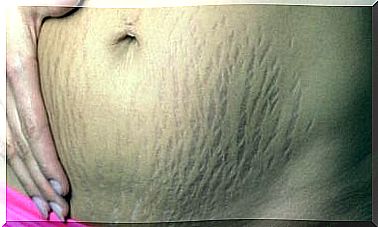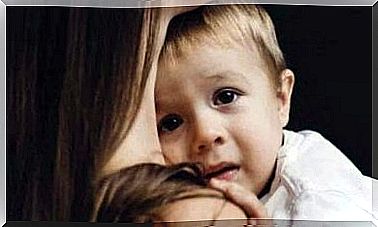How Is A Skin Angioma Treated In Children?
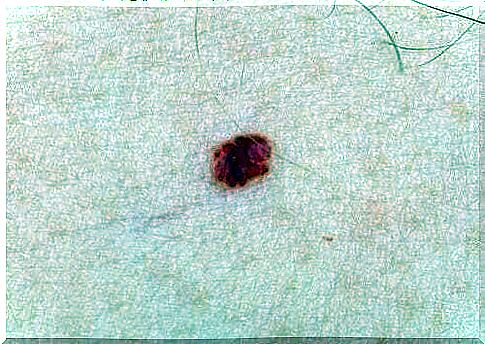
Angioma is a reddish spot, which can be superficial or deep, and which usually appears as a red lump on the skin. Some children have it from birth and it is very rare for it to appear in adults. It usually occurs in areas near the eyes, nose, or mouth, but angiomas can actually appear anywhere on the body. In this article we will tell you how to treat a baby skin angioma.
It is estimated that between 8% and 10% of children suffer from it, but there are no exact figures on this. In any case, a large percentage of children who suffer from angioma in the first year of life recover spontaneously during the following years of childhood.
In more technical terms, angioma is a benign tumor. It is thought to be a developmental defect and that hereditary factors may influence its formation. The tumor is made up of a group of blood vessels, whether they are capillaries, veins or arteries. All this together forms a kind of knot on the skin. Angioma never becomes a malignant tumor.
Some studies have established that angiomas are more common in premature babies or babies with a very low birth weight. It is also known that for every male child who suffers from it, there are three little girls who have angioma. However, most angiomas go away naturally.
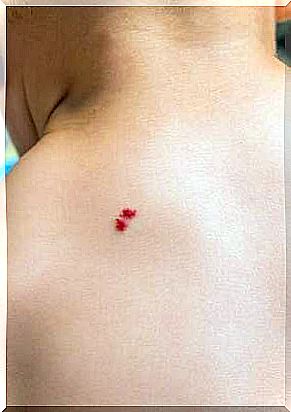
Types of angiomas
Angioma can be superficial or deep. If you think your child may have an angioma, it is best to consult a specialist to diagnose the problem more accurately and to determine how severe it is.
Based on their location and how they evolve over time, angiomas are classified into two types:
- Vascular tumors. This type of angiomas have thickness. Initially, they develop rapidly, but then gradually disappear without any treatment, that is, spontaneously.
- Vascular malformations. They appear as spots on the skin without thickness. With age they become darker and do not disappear on their own. They almost always appear on the face and correspond to capillary malformations.
Typical angioma is a vascular tumor. This presents a phase of proliferation and an involutionary one. During the first, the tumor growth process occurs; it is fast and usually begins during the first nine months of life.
The phase of involution corresponds to the stage in which the angioma disappears. It has been established that it gradually disappears according to age, like this:
- By the age of 3, up to 30% of children no longer have it.
- At 5 years, up to 50%.
- Children from 7 years, up to 70%.
- Upon reaching 9 years, up to 90%.
Treatment of angioma in children
When it comes to the typical vascular tumor, usually no treatment is applied as this angioma tends to go away on its own. In general, these types of cancers do not present any health risks, so it is simply advisable to let some time pass while maintaining an alert attitude.
However, in some cases, angioma requires medical treatment. In particular, in the following circumstances:
- If the angioma is very aggressive and causes psychological difficulties in the child.
- When it creates problems with another organ, such as those near the eye.
- When in the diaper area, as it could cause complicated wounds.
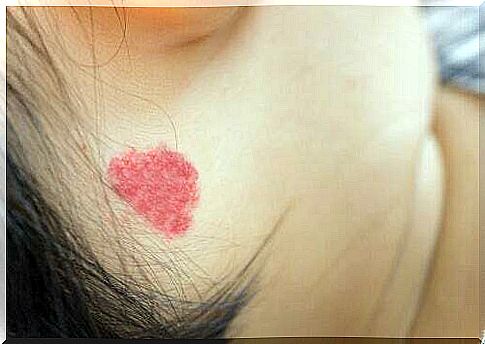
If the angioma is located near the eye, it could cause vision problems. If it is located near the mouth, it usually leads to difficulty swallowing. When it is close to the diaper area, it causes ulcerations which are extremely painful and difficult to heal.
The classic treatment consists in the administration of glucocorticoids in different quantities. Generally, higher doses are prescribed during the first few weeks. These types of drugs have side effects, such as difficulty falling asleep or gastrointestinal upset.
Complications of angioma in children
Superficial angiomas are the easiest to treat and also the most common. However, as we have already mentioned, they are sometimes deep and can hide bumps under the skin. In these cases, a dermatologist should be consulted to determine the diagnosis and indicate the steps to follow.
Typically, these vascular and capillary malformations are treated with laser therapy. They are very safe and almost always painless procedures. In addition, they have the advantage of not leaving scars on the skin or in any case very slight.
On the other hand, vascular tumors cause serious complications only in 1% of cases. This percentage corresponds to those who die from the side effects caused by a typical angioma.

